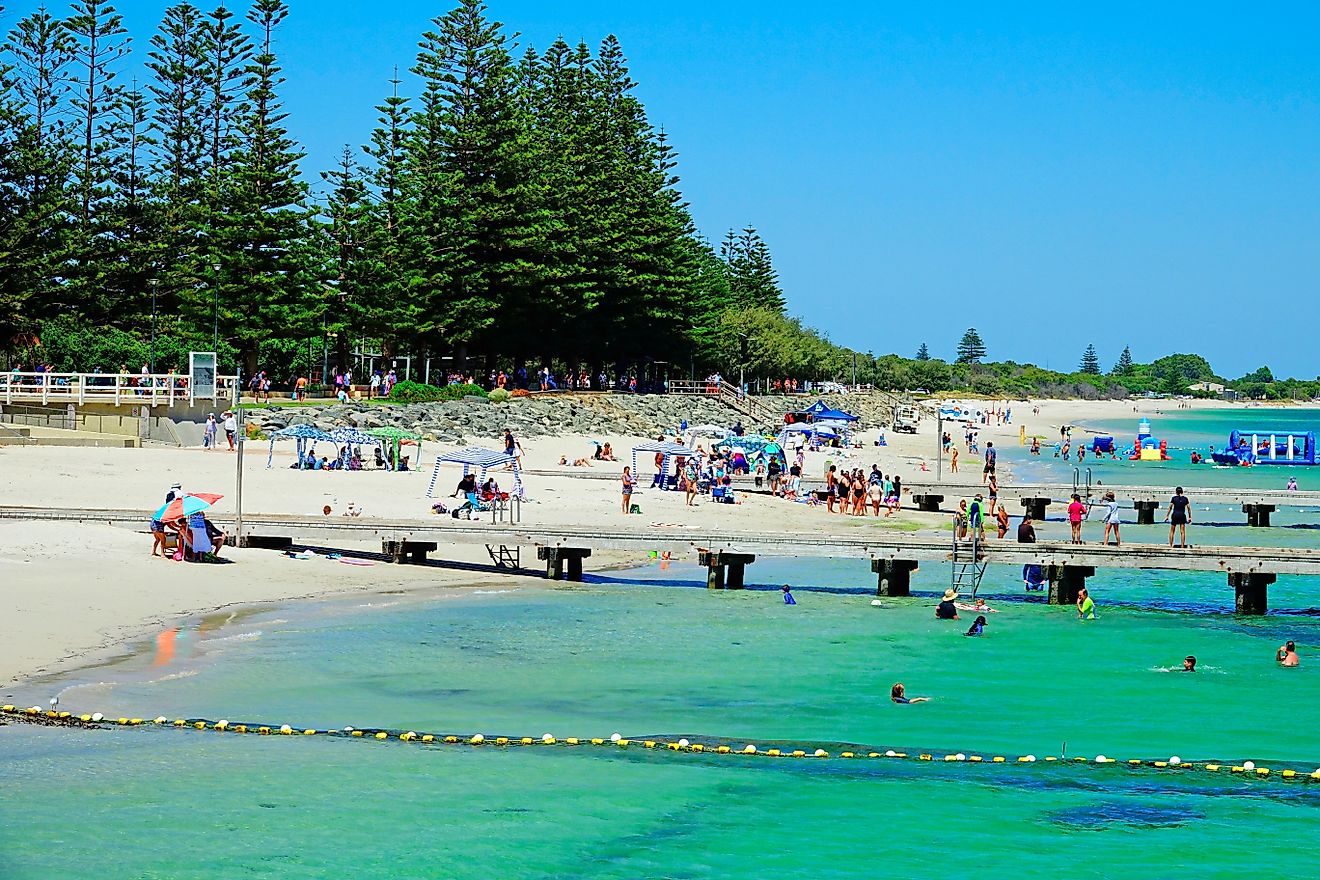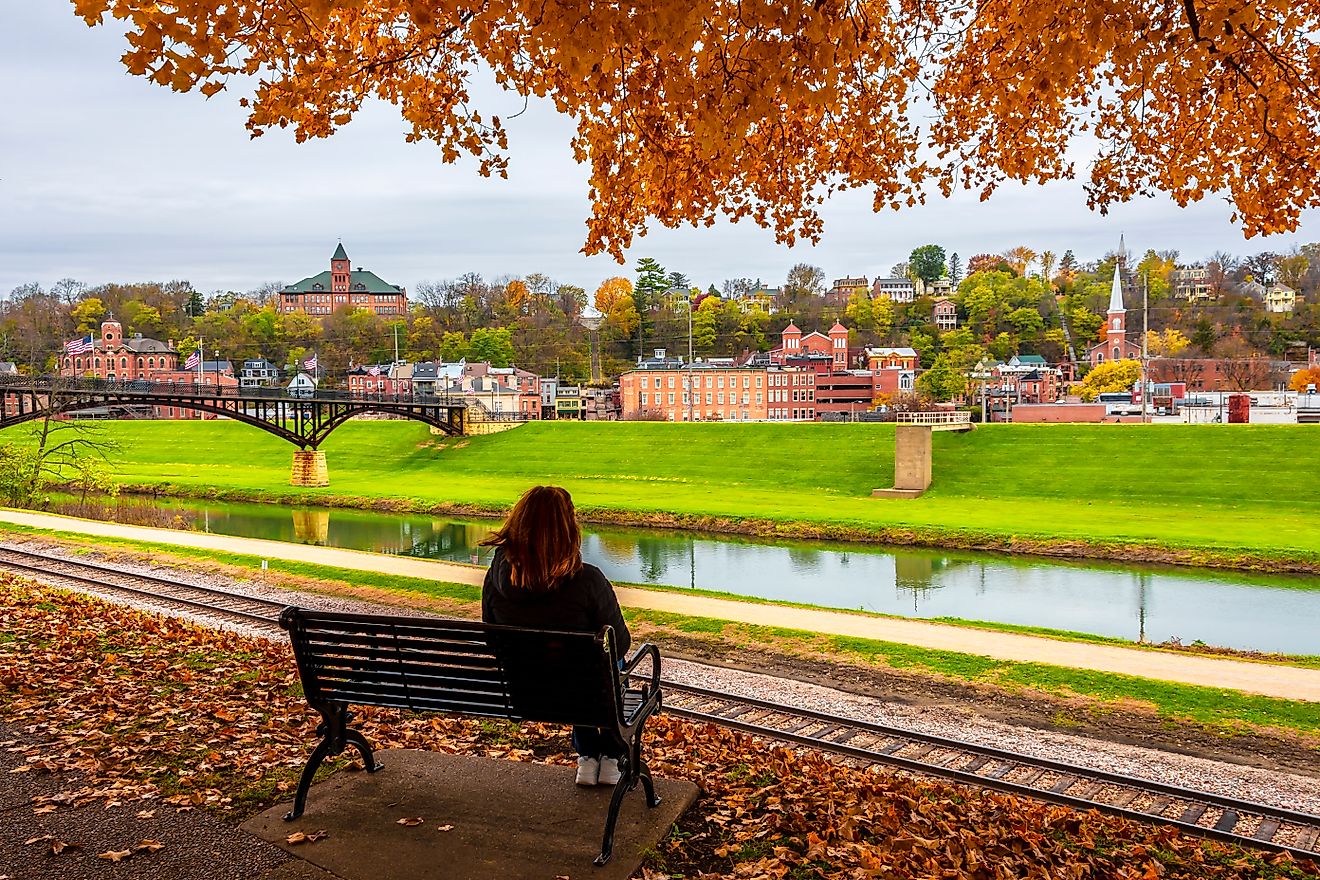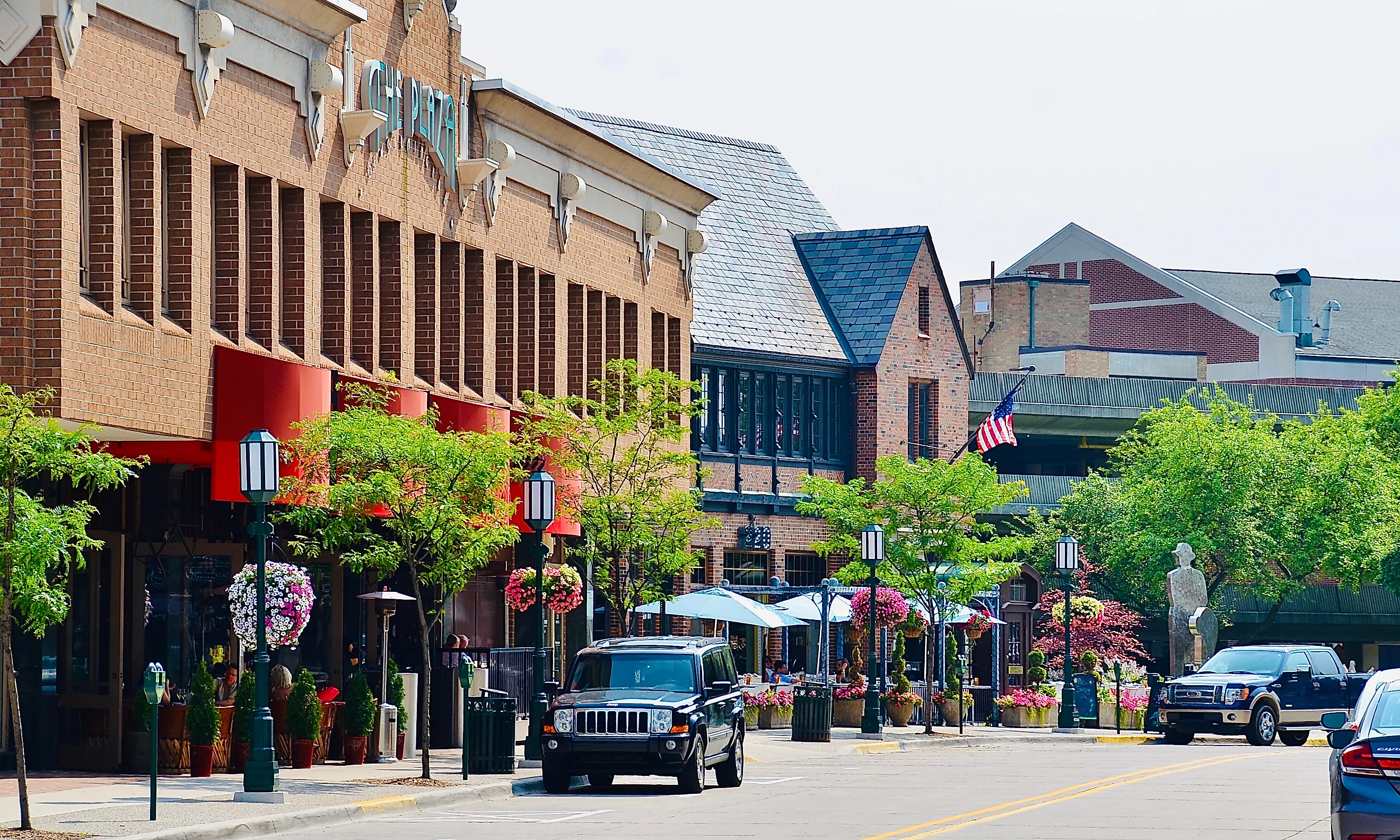
8 Safest Small Communities To Settle In Michigan
If a community’s safety can be heard, Michigan’s quietest proof arrives after 10 p.m.: screen doors clicking shut, sprinklers ticking across lawns, and the long pause between distant train horns. That soundscape is not an accident. It reflects towns with their own police departments, predictable street grids, and budgets that fund basics before spectacle.
This is not a list of sleepy postcards. The selections range from lakefront municipalities with resident-only parks to inland industrial towns that turned mills into theaters and offices. They run farmers’ markets without police tape, host downtown concerts without barricades, and keep school pickup lines moving without detail units on every corner. In these eight communities, routine is the point and the product of design, staffing, and data.
East Grand Rapids
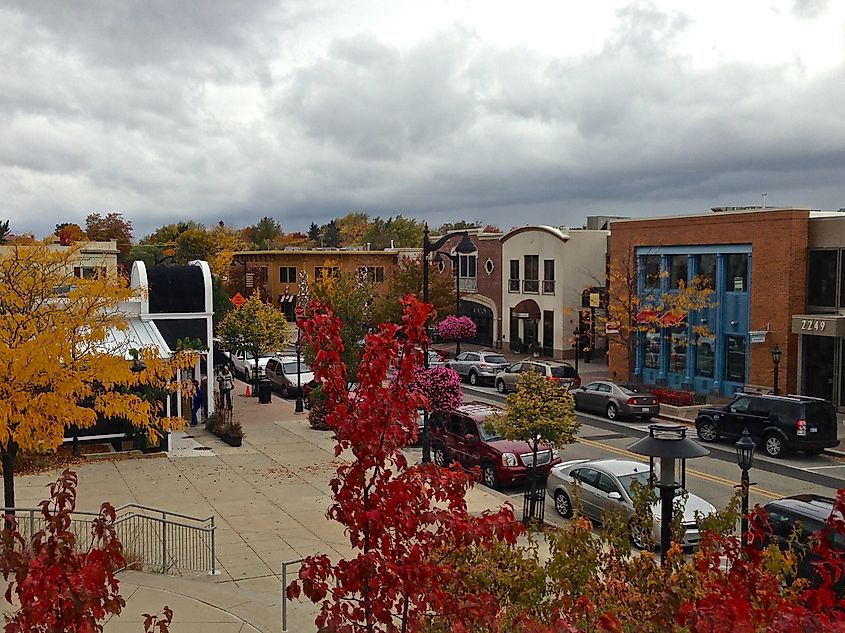
East Grand Rapids was once home to Gerald R. Ford and still reflects the quiet affluence and civic polish of a town shaped by old money and deliberate growth. Tucked just a few miles from downtown Grand Rapids, it’s entirely self-contained, an independent city with its own police, fire, and schools, wrapped around the glacial Reeds Lake. With a population of just over 11,000 and a violent crime rate that consistently falls below state and national averages, it has become a residential enclave known for stability rather than spectacle.
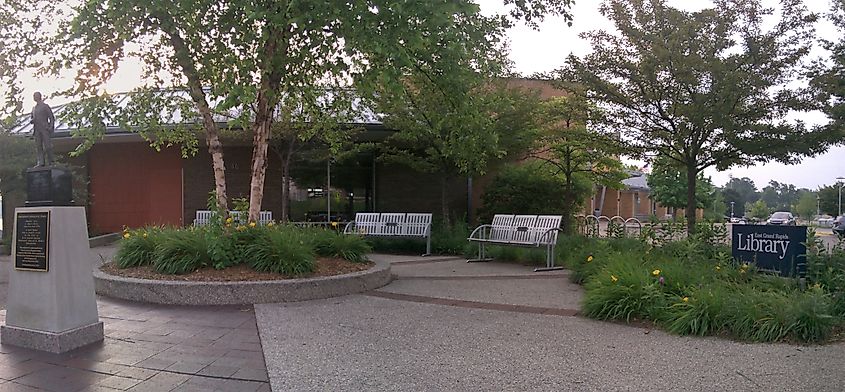
The heart of the city is Gaslight Village, a three-block stretch with some independent storefronts. Rose’s on Reeds Lake, open since 1901, anchors the dining scene with lakefront views and wood-fired pizzas. The 4.2-mile Reeds Lake Trail loops past mansions, schools, and wooded wetlands. John Collins Park offers benches along the shore, boat launches, and summer concerts. Inland, Manhattan Park, rarely crowded, features walking trails, sports fields, and a secluded sledding hill in winter. Everything in East Grand Rapids is walkable, tightly zoned, and preserved with intent.
Birmingham
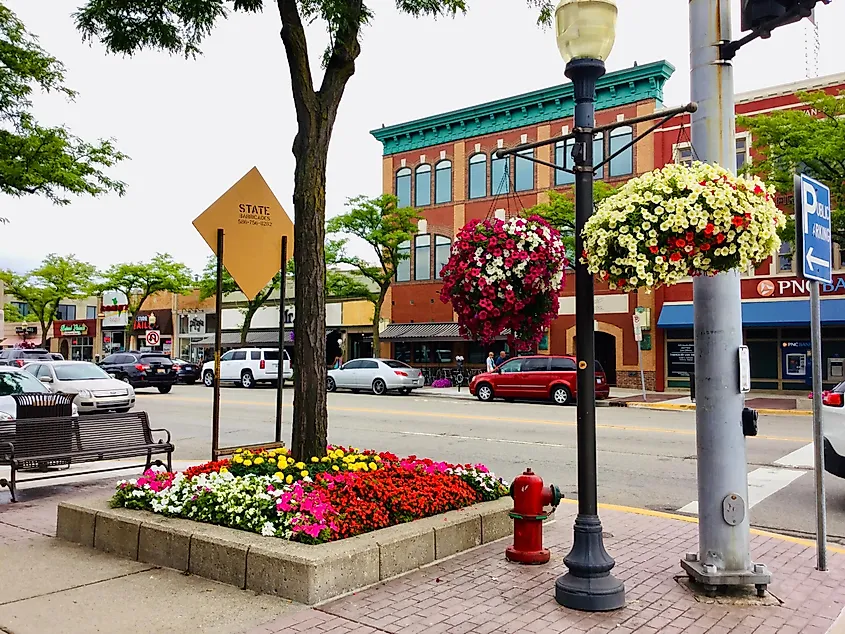
Birmingham was designed for foot traffic before the suburbs existed. Originally a stagecoach stop between Detroit and Pontiac, it evolved into a streetcar suburb with a walkable downtown that has never lost relevance. Today, the city maintains its own police and fire departments, and its violent crime rates remain well below state and national benchmarks year after year. With a population under 22,000 and a strict approach to zoning and development, Birmingham is known for its high-functioning civic services and predictable public safety.
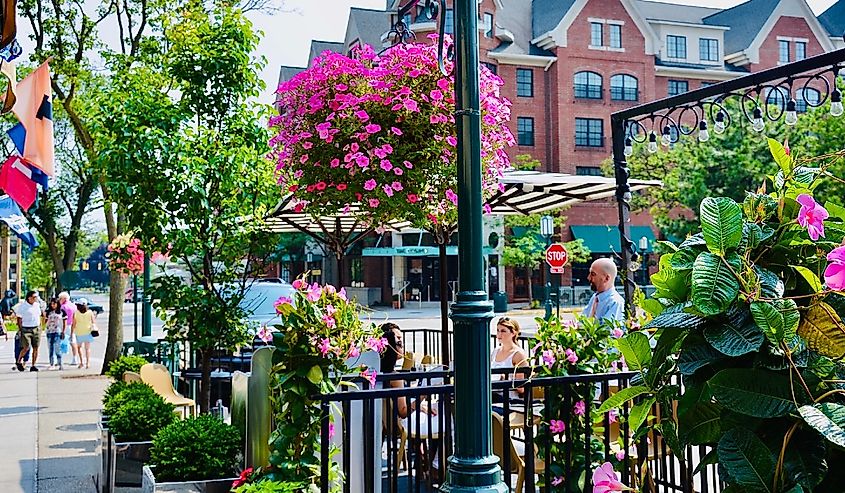
The commercial core is Old Woodward Avenue, where streetscape redesigns have prioritized benches, pocket parks, and storefront visibility. Daxton Hotel’s Madam restaurant draws regional attention for its prix fixe menus, while Commonwealth Café serves breakfast without pretension or delay. Shain Park, directly across from the Baldwin Public Library, hosts weekly concerts in summer and is surrounded by sculpture installations and granite seating blocks. Quarton Lake Park cuts through the residential district with a concrete path flanked by willow trees and stone bridges.
Rochester
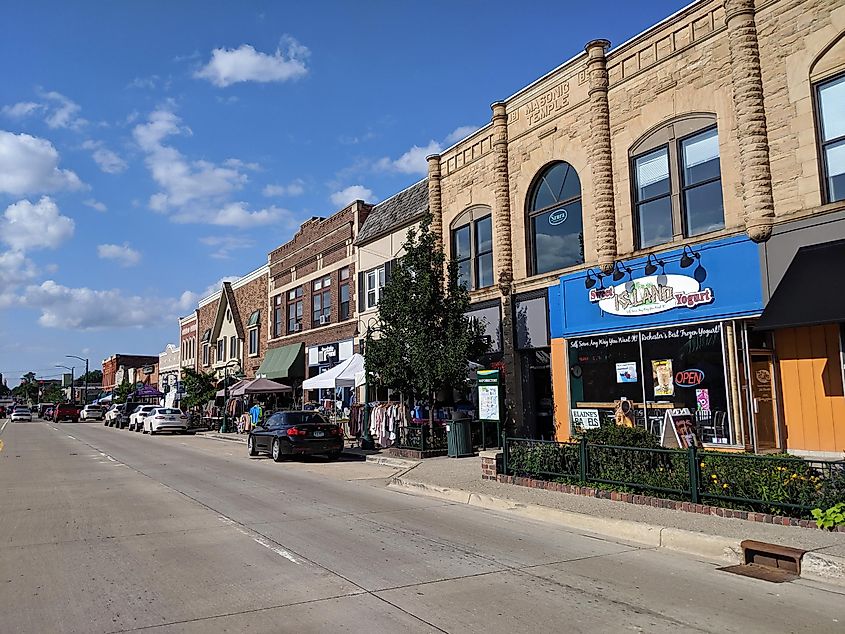
Rochester is one of Michigan’s oldest settlements and still operates on its original downtown grid, laid out in the early 1800s. The city has avoided annexation and commercial sprawl, preserving both its independence and its infrastructure. With a population just over 13,000 and a full-service police department reporting violent crime rates consistently below state and national averages, Rochester has become a residential hub for professionals seeking walkability without compromise. It’s also the host of the Big Bright Light Show, a winter event that floods the downtown with over one million synchronized LED bulbs.
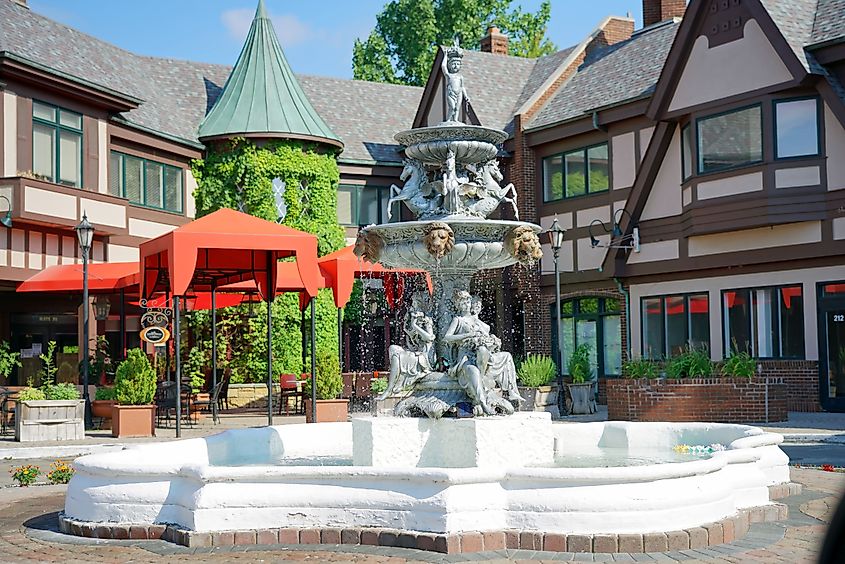
Rochester Municipal Park anchors the west end of downtown with a trout stream, a bandshell, and access to the Paint Creek Trail, a 9-mile crushed limestone path that cuts through shaded floodplain and connects to the Clinton River Trail. Dessert Oasis Coffee Roasters operates inside a two-story brick building with live acoustic sets and small-batch roasting on-site. The Rochester Mills Beer Company, housed in a 19th-century woolen mill, brews lagers on the premises and runs a side room for pinball and air hockey. Dinosaur Hill Nature Preserve sits within city limits, offering field programs, mapped trails, and a log cabin replica used for historical education.
Holland
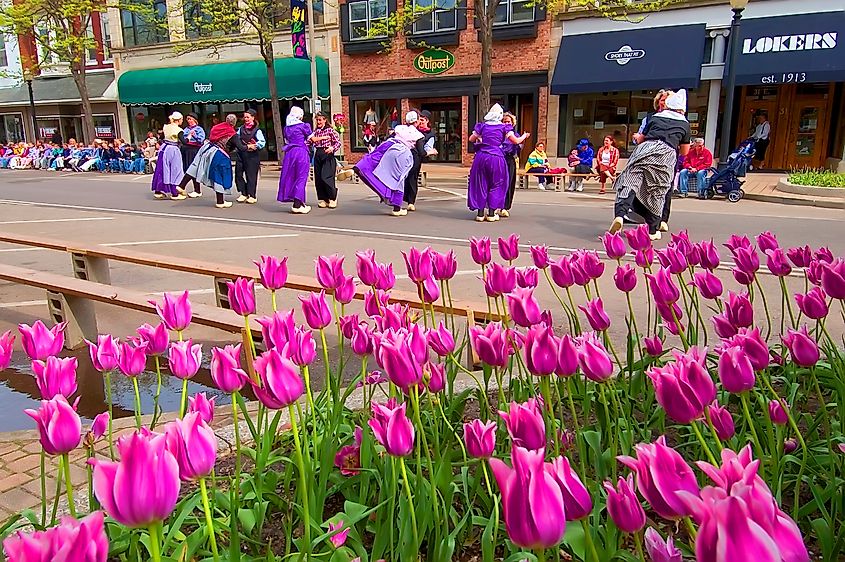
Holland maintains the only working Dutch windmill in the United States, and it still grinds flour with imported millstones. De Zwaan stands on Windmill Island Gardens, a municipal site that reflects the town’s founding by Dutch Calvinist separatists in 1847. Despite being a tourism draw with seasonal population spikes, Holland’s violent crime rate remains stable and lower than both Michigan and U.S. benchmarks, including consistently low aggravated assault and homicide rates. The city maintains its own public safety department with integrated fire and police services.
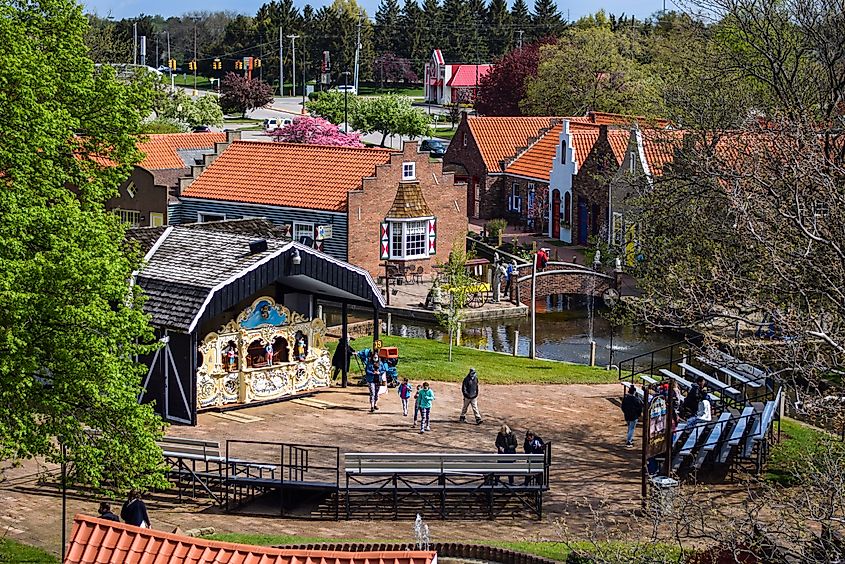
8th Street is the commercial spine of downtown, lined with heated sidewalks and independently owned shops. Boatwerks Waterfront Restaurant overlooks Lake Macatawa with dockside seating and a rotating freshwater fish menu. The Holland Museum on Centennial Street maintains rotating exhibits on immigration and local maritime history. Kollen Park, situated along the lakefront, hosts the city’s Tulip Time Festival and provides open-air pavilions and a performance gazebo. Holland State Park, west of the city center, includes a wide Lake Michigan beach and direct views of the “Big Red” lighthouse.
Petoskey
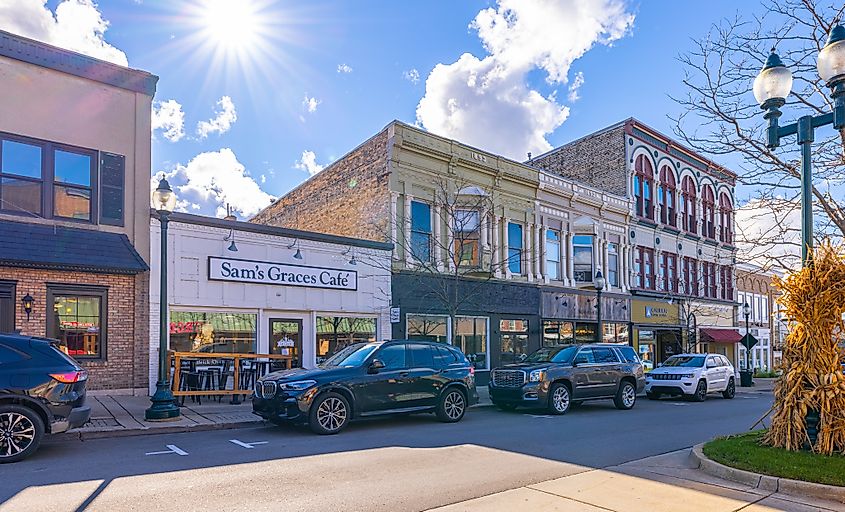
Petoskey sits on a bluff overlooking Little Traverse Bay and is one of the few towns in Michigan where glacial stone, resort-era architecture, and Hemingway history intersect. Ernest Hemingway spent his boyhood summers on nearby Walloon Lake and later fictionalized Petoskey in his Nick Adams stories. The city’s Department of Public Safety reports low year-over-year rates of aggravated assault and virtually no homicides, even with summer tourism. Officers cross-train in fire and law enforcement, and patrol routes cover both shoreline and inland districts without outsourcing emergency services.
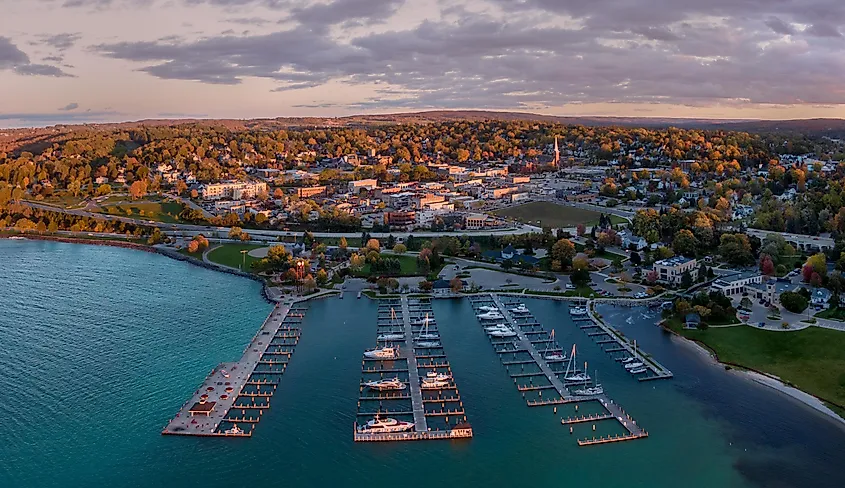
The Gaslight District, centered on Lake Street, includes McLean & Eakin Booksellers, American Spoon Café, and symmetrical rows of Victorian-era storefronts. Pennsylvania Park bisects the business core and hosts weekly concerts from a covered bandstand. Bayfront Park, set on a lower terrace along the lake, offers marina access, breakwall walking paths, and direct views of Harbor Springs across the bay. The Little Traverse Historical Museum occupies a former train depot and includes rotating exhibits on Odawa history, rail migration, and Hemingway’s connection to the region. Petoskey’s shoreline produces its namesake fossil-stone, often collected at Magnus Park and the rocky shallows of Sunset Park.
City of Grosse Pointe
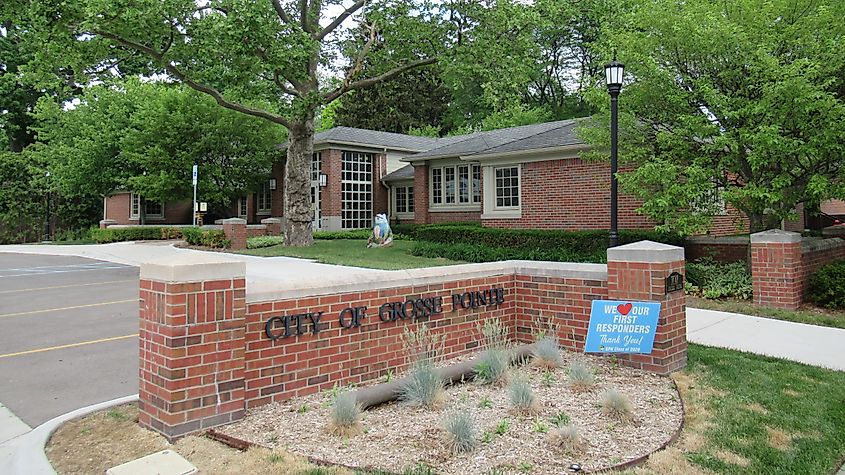
The City of Grosse Pointe was one of the first Michigan suburbs to impose architectural controls on new construction, preserving a pre-war aesthetic that still defines its streets. With a population under 6,000 and its own fully staffed public safety department, the city reports minimal violent crime year over year, with aggravated assaults rarely exceeding single digits and no homicides across multiple reporting cycles. It shares no police jurisdiction with Detroit, despite proximity, and maintains separate 911 dispatch and emergency infrastructure.
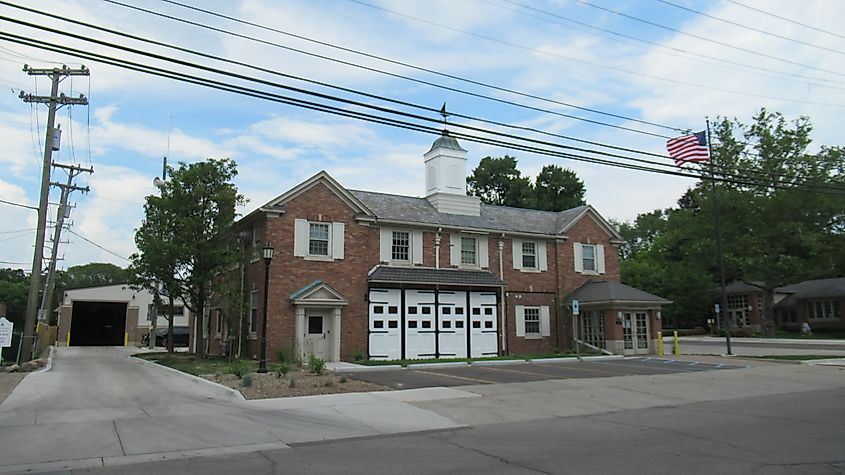
Kercheval Avenue’s “The Village” is the city’s commercial spine, with locally run spots such as Pastaio (17043 Kercheval) and Side Street Diner (630 St. Clair) joined by The Whiskey Six (646 St. Clair) a block off the main drag. Neff Park, for residents and their guests, adds a pool, seasonal ice rink, marina access, and lakefront picnic areas with gate-controlled entry.
Grosse Pointe Farms
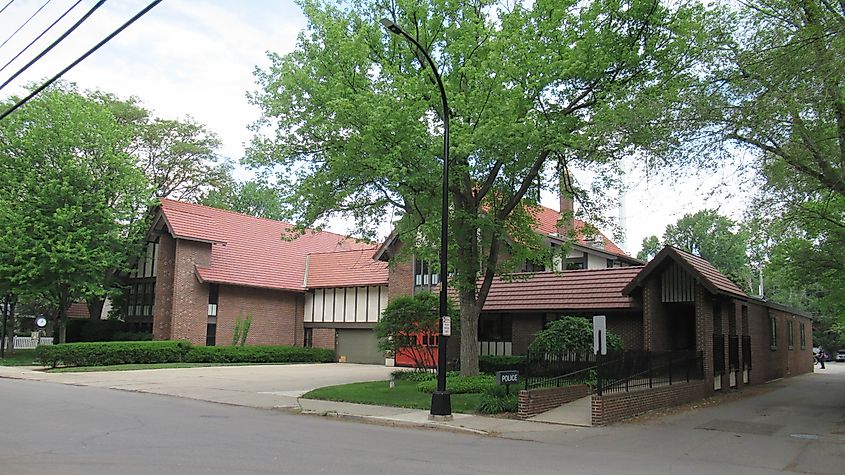
Grosse Pointe Farms operates under a public safety model where every officer is cross-trained as a firefighter, EMT, and law enforcement agent. The city, incorporated separately from the other Pointes, includes the steepest grade changes along Lake St. Clair and the only section of shoreline with elevation above floodplain. With just over 10,000 residents and consistently low violent crime statistics, the Farms maintains proactive patrol coverage, including on-foot presence in commercial zones and license plate recognition at major entry points.
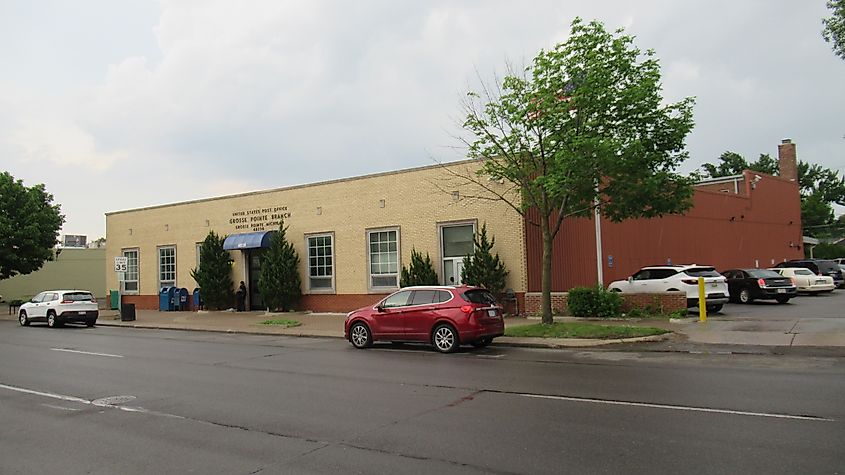
The Hill is the main commercial district, lined with businesses like Jumps Bistro and Morning Glory Kitchen. Pier Park is resident-only, accessible by keycard, and includes a harbor, pool, kayak racks, and tennis courts. St. Paul on the Lake Catholic Church, built in 1899, anchors the north end of the city and remains an active parish and architectural landmark. Richard Elementary, Brownell Middle School, and Grosse Pointe South High School all fall within city limits and report high safety ratings.
Chelsea
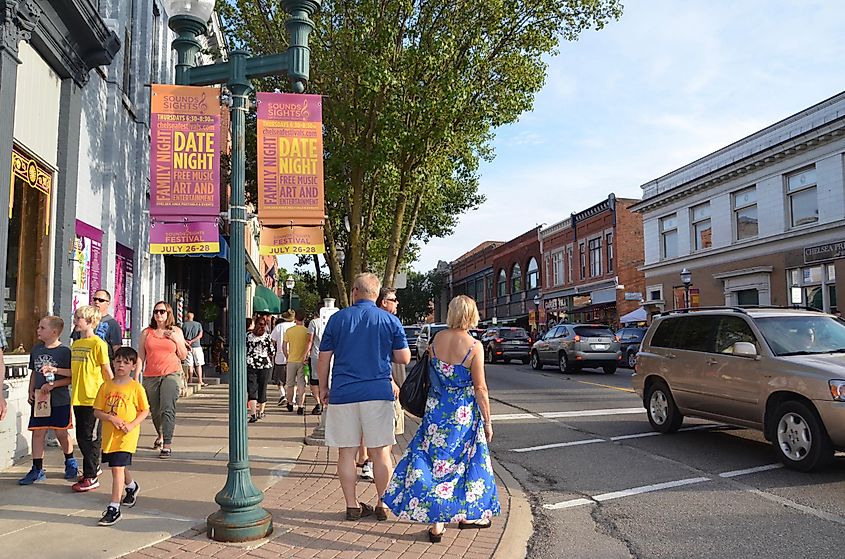
Chelsea is home to the headquarters of Jiffy Mix, one of the only remaining family-owned industrial food manufacturers in the country. Its grain silos and blue-and-white packaging dominate the downtown skyline. With a population under 6,000 and a city-operated police department, Chelsea reports violent crime rates well below state and national levels, with few aggravated assaults and no recent homicides. The department conducts regular foot patrols in school zones and business corridors, and mutual aid agreements with nearby townships ensure backup without delay.
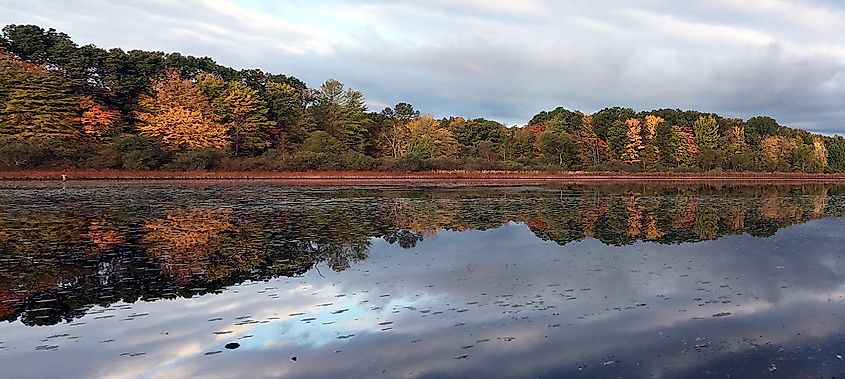
The Clocktower Complex, a redeveloped 19th-century industrial site, includes a cigar shop, galleries, and offices built into former mill structures. The Purple Rose Theatre, founded by actor Jeff Daniels, produces original American plays and operates year-round with union actors. TimberTown Park, built with community labor, includes a wooden play structure, amphitheater, and trail connections to the B2B non-motorized path system. Chelsea Community Fairgrounds hosts a demolition derby, tractor pulls, and livestock shows every August.
Safety in Michigan’s small communities isn’t a slogan; it’s the outcome of budgets that fund patrols, lighting, and maintenance before spectacle. Each town here pairs jurisdiction with quick response times and street plans that keep people visible and predictable. Schools, parks, and downtowns operate without drama, even during festivals and tourist surges. The result is days, late walks, early commutes, weekend errands, that proceed on schedule, proving why these eight places endure.
